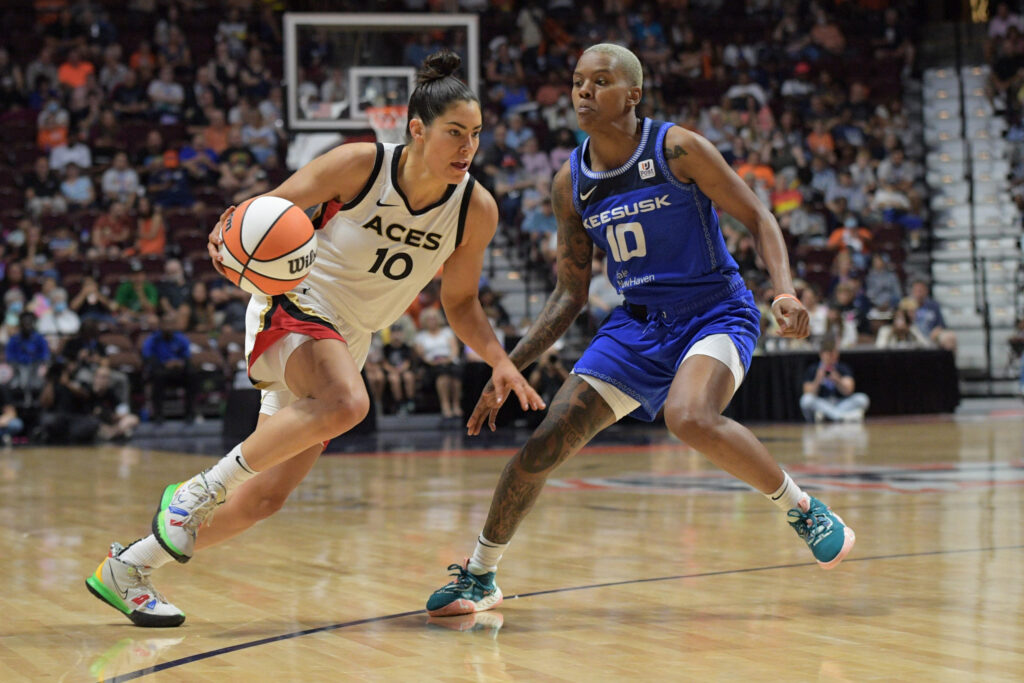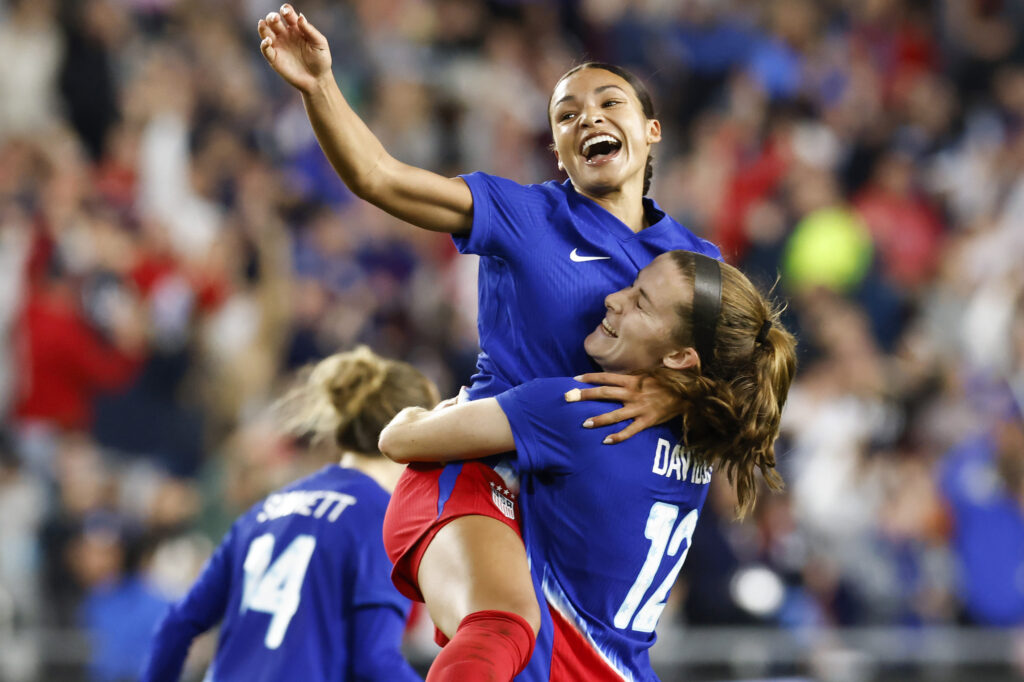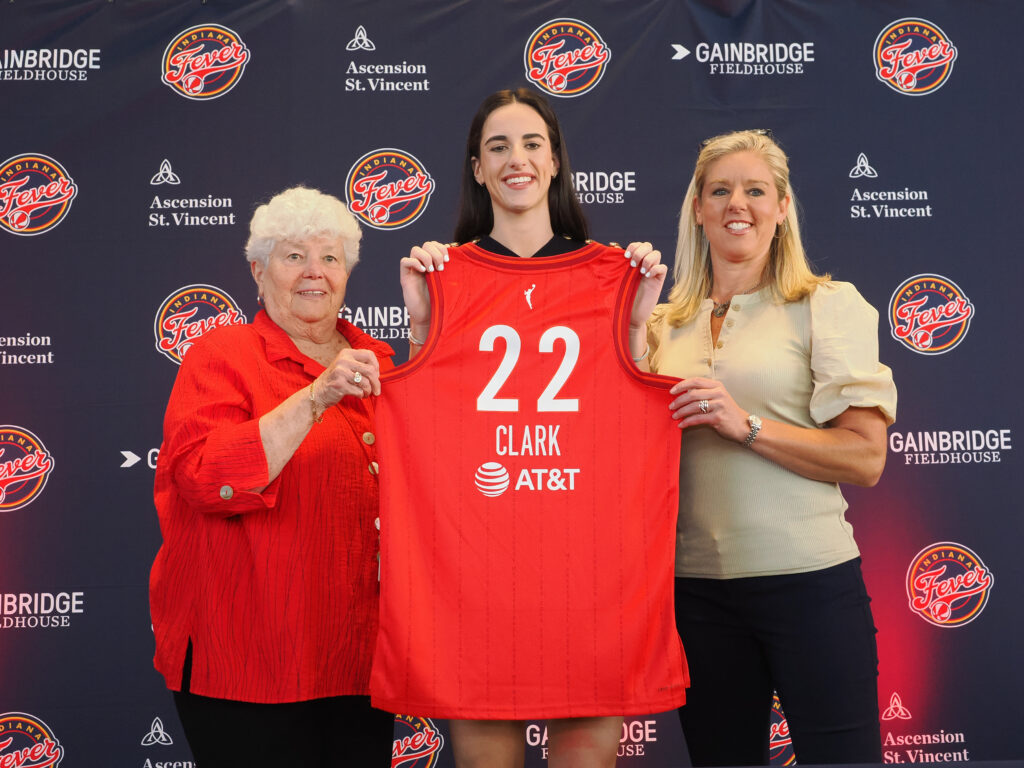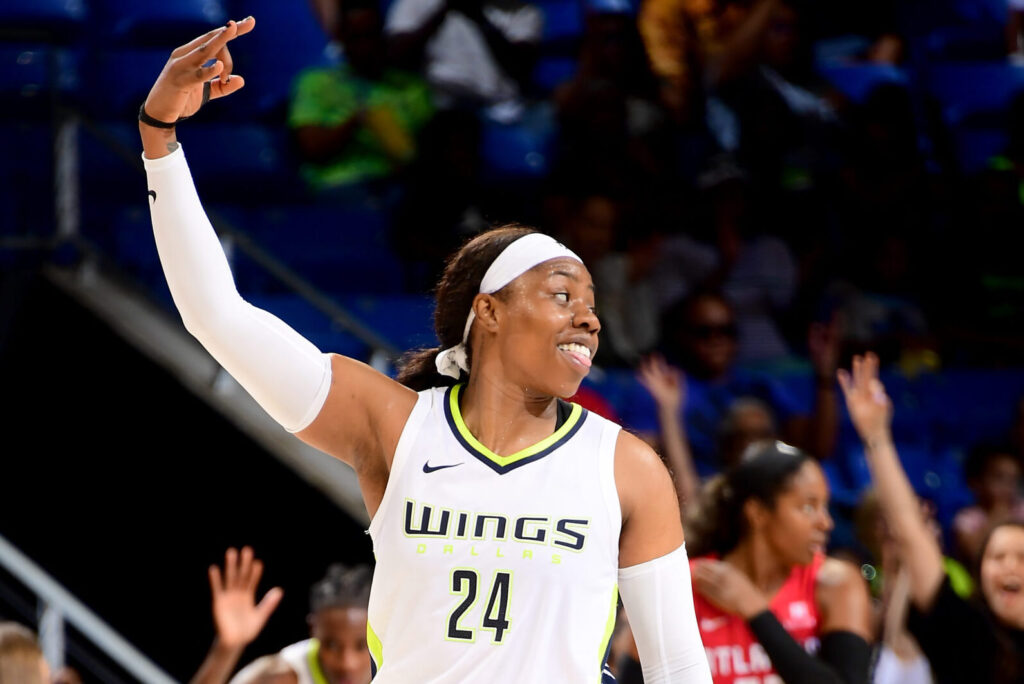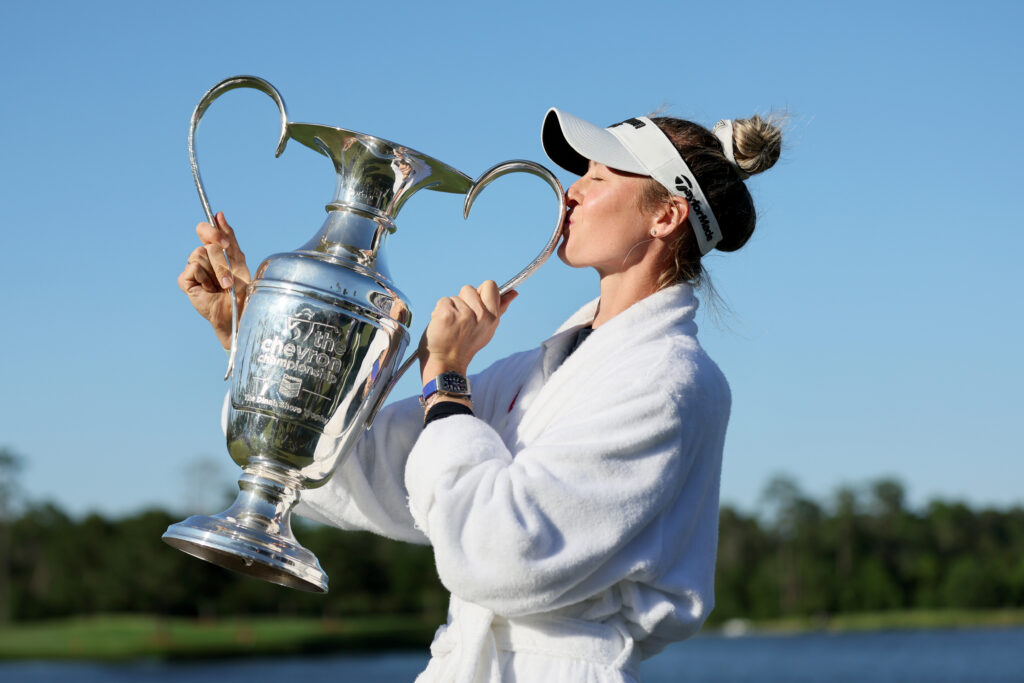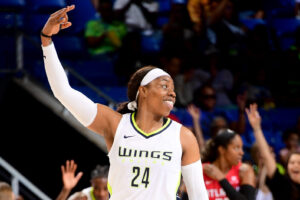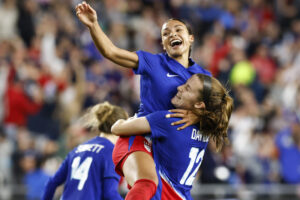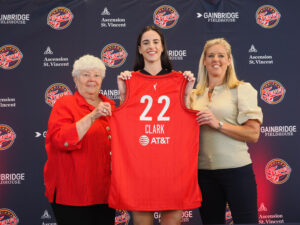The 2022 WNBA Finals stage is set as the No. 1 Las Vegas Aces and No. 3 Connecticut Sun will square off in a best-of-five series in pursuit of each franchise’s first-ever championship.
The Aces, after finishing a league-best 26-10 in the regular season, swept the Phoenix Mercury in two games before beating the Seattle Storm 3-1 in the semifinals. First-year head coach Becky Hammon was named WNBA Coach of the Year, while A’ja Wilson earned the league’s Most Valuable Player award for the second time in her career.
The Sun went 25-11 to close out the regular season before defeating the Dallas Wings 2-1 in the opening round of the playoffs. On Thursday, they knocked off the defending WNBA champion Chicago Sky in a crucial Game 5 finale to advance to their fourth Finals in franchise history.
The Aces went 2-1 against the Sun during the regular season, with all three games decided by eight points or fewer. On May 31, the Aces won 89-81, and two days later the Sun pulled off a 97-90 victory on the road. It has been nearly two months since the teams last met. Las Vegas won their lone game in Connecticut on July 17, 91-83.
With anonymous insight from two current WNBA coaches, who studied and game-planned against Connecticut and Las Vegas during the season, we break down the key questions of the matchup and what it will take for either team to win a title.
First, the Sun are 10th in the league with 15.6 turnovers per game, while the Aces led the league with just 11.7 per game. Connecticut averaged the same amount against the Aces in their first three meetings this season. In their one win over the Aces, the Sun limited their turnovers to nine. Taking care of the basketball will be especially important for the underdogs.
Second, the Sun are not only the top rebounding team in the league but also first in offensive rebounds, pulling down 10.2 a game. They also average a league-best 13.5 points off second-chance opportunities, whereas the Aces average 6.9 offensive rebounds per game, the second-lowest mark in the WNBA during the season.
Third, half of Connecticut’s points come in the paint, whereas Las Vegas generates around 38 percent of its offense in the paint. Whichever team can control the paint consistently in this series will have a major edge.
Here is what the two WNBA coaches had to say about this Finals matchup.

How do you contain the Aces offensively?
Coach 1: Naturally playoff basketball slows down, and I don’t necessarily think that there is going to be an intention of slowing the game down. Connecticut is going to play their pace, and that has been how they’ve had success. The issue is going to be if they don’t take care of the basketball. If they have 23 turnovers again, they won’t win. Connecticut doesn’t normally take a shot early in the shot clock unless it’s a true fast break. At this point, you are very seldom trying to change what you do except alter a few things to neutralize the opponent. That might come in an occasional blitz or an occasional trap on some people, just trying to steal some possessions here and there. Everyone is too familiar with each other at this point.
Coach 2: As coaches, we always say, ‘Continue to do what got you there, but you’ve got to throw wrinkles in at this stage of the game.’ Connecticut has to focus on transition defense and dropping three and defending the rebound because Connecticut can pick up in the full court. Let’s talk about Chelsea Gray — I love her and she’s on fire. She prefers that middle range, middle right side of the floor and averages about five jump shots a game. I would pick her up a little bit before halfcourt if they can. If you notice, she will turn her hip into the defender; she doesn’t like pressure. If she does that, it takes away the shot clock and also takes away half of her vision so she doesn’t see the floor as well. So get up, pressure her, make her get the ball out of her hands.
When it comes to A’ja Wilson, throw Jonquel Jones at her. She’s shooting 58 percent at the rim this season and she loves the left block. But Connecticut a lot of times has played behind her, and there’s no way I’d let her square up her shoulders to the ball, especially on the left block. I would over-deny her. I would extend that arm, make her catch it extended off the block but also make the guards pass it to her towards the baseline. Vegas is going to expect the double team, so I would hold onto that wrinkle for later in the game and see what happens.
Kelsey Plum is Kelsey Plum — you have to match up with her in transition right away. That’s where the drop three comes into the equation. Riquna Williams is an offensive spark plug off the bench. I’d make her put it on the deck. She doesn’t make great decisions in traffic, and if you give her a straight-line drive, that’s different. Same thing with Theresa Plaisance. Eighty-five percent of her shots are from 3. Make her put it on the deck and she’s turnover-prone. I would run her off the line.
You have to get Vegas into their bench — that’s their lack of depth.

What are the keys for each team to be successful?
Coach 1: Vegas is going to be Vegas. They’re not trying to do anything any differently, and that is to outscore you. That’s the key. They figured out that they need to feed the monster first. That also plays to their need to establish an inside presence and play from the inside out.
Vegas is going to have to defend without fouling because that slows the game down. It results in easy points and will force them to have to get into their bench.
Sometimes we just assume that they’re a really good rebounding team, but they’re not. So, Vegas is going to have to rebound the basketball. Their offense is a lot of 4-out-1-in, quick shots, long rebounds, other people can get it, so you have to pursue the glass.
For Connecticut, if they can make more free throws than Vegas attempts, that’s a plus for them.
Defensively, it’s about containing the three-headed monster of Las Vegas, and you do that by breaking rhythm. Now, that’s easier said than done. You can’t have a steady diet of one scheme. Vegas kind of helps that at times because Wilson gets away from the block a lot. There have been moments when she wasn’t getting on the block a lot and she had sort of fallen in love with the jumper. For opponents, it’s like please shoot that jumper all day, and that favors Connecticut. Your percentages go down. Now Wilson’s percentages are good from the perimeter, but they aren’t what they are in the paint. It’s a game of percentages in a five-game series.
Gray is a problem. We threw all we could at her. She’s tough. We just wanted to break her rhythm. The second key is Plum. She’s hard to trap, but when you scheme for her, if she doesn’t get her touches, she gets kind of thirsty so you know when it’s going up. Try and get Wilson to fall in love with the face-up perimeter game and get Plum antsy. Nobody has been able to crack that code, but you have to contain the three-headed monster.
You’ve got to try to get Vegas into their four-guard lineup. When we first did it, it was to rest Wilson and hide Kiah Stokes. The longer they do that, it works in the Sun’s favor. It stresses them out more than the other because their playbook is shrunk. You can switch 85-90 percent of your screens, and then when they are switching everything, they have two place — if you don’t change — where they have to cover for one another. We wanted them to go to that because we knew what they were going to run.
Coach 2: Connecticut must communicate on both sides of the basketball. They’ve got to contain every player that steps on the court, get to the free-throw line, limit turnovers, box out. Offensive rebounds are also going to be big for Sun, and getting extra possessions and being able to rely on their paint points. Vegas allows a lot of paint points — that should play in the Sun’s favor majorly. Transition defense is very important, and they have to execute with discipline on offense with great spacing. Las Vegas is not overly aggressive on the first pass, so that works in Connecticut’s favor to able to run their action.
Defensively, the Sun can throw them off rhythm by throwing some traps at them, overplaying them and keeping them out of the middle of the floor. A lot of their drives and penetration come from the middle of the floor, so keep them pinned to the sideline.
Vegas has to have a no-paint mentality. Keep Connecticut away from the paint. I would sag off a bit, other than a couple players who you know can get hot, maybe DeWanna Bonner or Natisha Heideman, but really keep them off the offensive boards. Vegas has to block out.
The Aces need to be themselves, find their rhythm early and strike first. Establish Wilson early and get her going. Limit their turnovers because that’s how Connecticut gets a lot of their offense. Maybe bigger than any other stat, Las Vegas has got to rebound the basketball, which is a daunting task against the Sun at times.

Who has the edge in the paint? Backcourt?
Coach 1: Vegas has the advantage in the backcourt offensively for sure, but it depends on what you’re looking at. They’re not trying to play any defense. And then Jackie Young, if they run certain things, you can neutralize her if you put her in a ball screen with your best four and they switch. If Connecticut can make the fourth or fifth pass, get to the third side of the floor and it will slow the game down, it will stress out their defenders on the perimeter outside of Young, and that can be hugely beneficial.
Coach 2: Connecticut has the edge in the paint, I mean that’s how they get all their points by forcing turnovers, getting out in transition. It’s what they do. Their weakness is 3-point shooting. When they start playing individual basketball, it’s usually caused by ball pressure and teams not giving them paint touches.
Vegas has the best guards right now. Jackie Young is a silent killer. She and Kelsey Plum are unmatched if they’re in their flow and playing well.
What makes the Aces so good offensively?
Coach 1: Chelsea Gray. That’s not taking anything away from the MVP. The MVP doesn’t run the offense. The MVP is being directed to the conductor. She orchestrates it all.
Coach 2: They can score from any area on the floor, one through five. They play a little bit of that positionless basketball. Teams are forced to try and pick their poison, and it has been a headache for everyone all year long. Everyone on this team has improved, and they’re playing in a style that only enhances each of them. Everyone is in extraordinary shape and can go forever. They have a swagger and a confidence to them that goes unphased a lot of the time.
What makes the Sun so good defensively?
Coach 1: It’s length and physicality. You think about DeWanna Bonner at the three, that’s length. Alyssa Thomas at the four, that’s physicality. Jonquel Jones speaks for itself. But that same length can play with pace and crash the offensive boards, so they aren’t just one dimensional in their length. And if the ball is making extra passes, that’s when it really comes into play. You can’t play pretty against them. They won’t allow it.
I mean this in a complimentary way, but Thomas is not the most skilled. She is the least skilled of all of them out there, but her heart is the most skilled. Courtney Williams has an edge. Even if Odyssey Sims comes in for two minutes, she has an edge. They’re not going to be bullied, they aren’t going to be punked. While Vegas is the favorite, if Connecticut can muck it up, it can get ugly and Vegas can get frustrated.
Coach 2: I love Connecticut’s defense and I love the physicality. That’s what they do best. They take pride in that physicality. At times, they will drop three. At times, they will do their full-court press, which is really good. We know their defense keeps them in games. They’re active, aggressive, their shell is tight, they bring intensity, they will switch and shoot the gaps, they will ice, they will hard hedge, they force middle on pick-and-roll and force to players off hand, they play behind in the post (although I would change that a bit in this first game). They trap at times. They are last in blocks, but that’s not a big deal. They are good at altering shots and they clear the rebound.

What is it about Becky Hammon and Curt Miller that has gotten them to this point?
Coach 1: They both have a core that has experience. So then it comes down to how much experience do they personally have with their given core? Who can hold true to what’s gotten them there and challenge their players to do it better without abandoning it in the heat of the moment?
In terms of adjustments, Curt lost at point guard. So, he will be making more adjustments. Becky won’t have to in the moment. That’s OK because he has that core, he’s been doing it more. That gives Becky a chance to focus elsewhere. I think whatever lack of experience Becky has with her core, Gray and Plum help that. The MVP, DPOY and MIP all help that.
Coach 2: It’s their preparation and taking pride in what you do and doing everything you can possibly do to help your team be successful. These are things they have been preparing for since day one. They are smart, they understand the game, and they are teachers of the game. When you have a strategic mind, the way those two do, this is what you’re going to get. They listen to their players, they get advice from their players. They watch so much film. It’s a chess game, saying ‘what if this happens?’ And being ready for it. Knowing time and score, knowing special situations, who they are going to pick on. They are fully and totally prepared, and that is why they are in the championship game.
Rachel Galligan is a basketball analyst at Just Women’s Sports. A former professional basketball player and collegiate coach, she also contributes to Winsidr. Follow Rachel on Twitter @RachGall.
